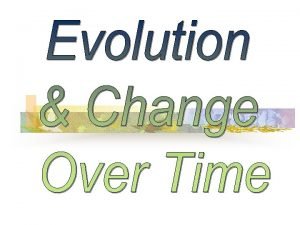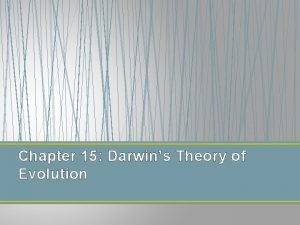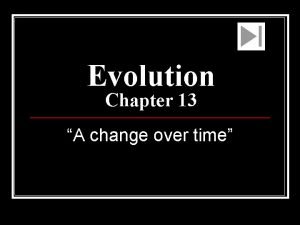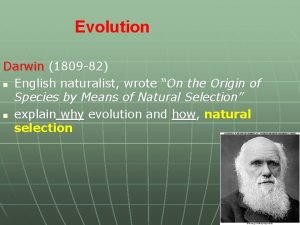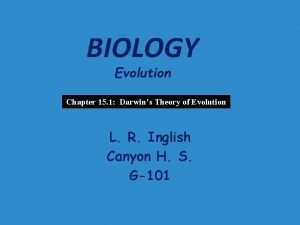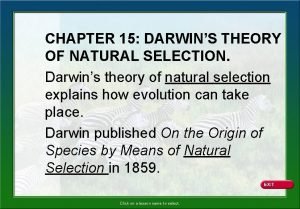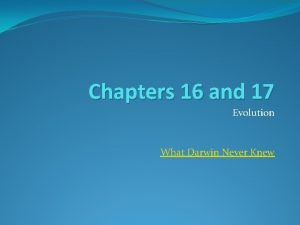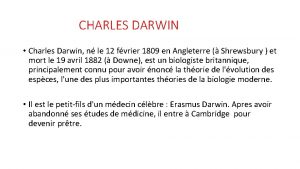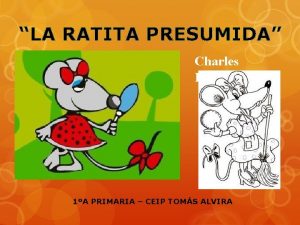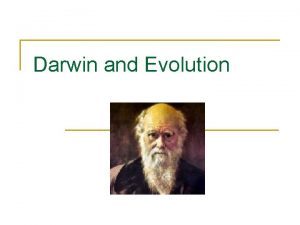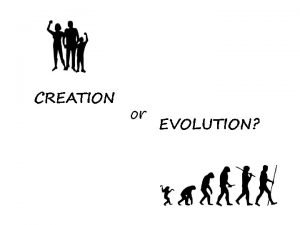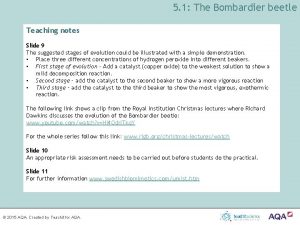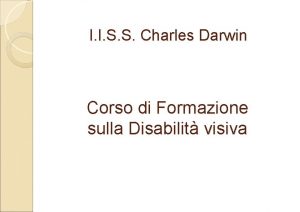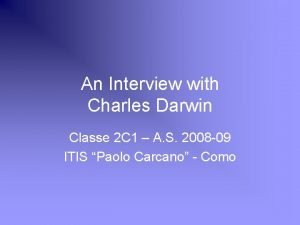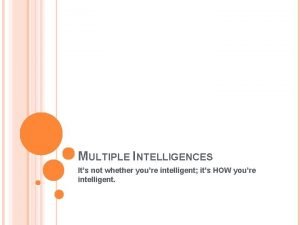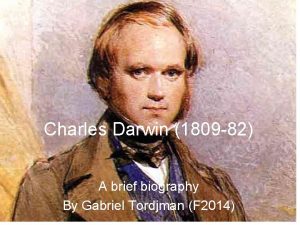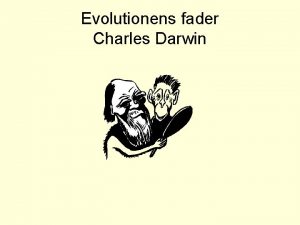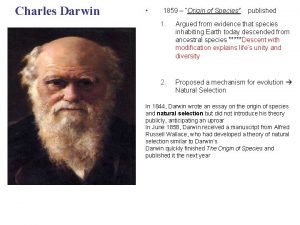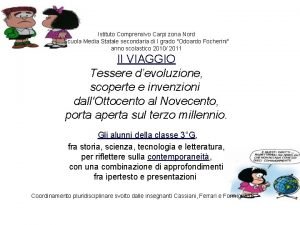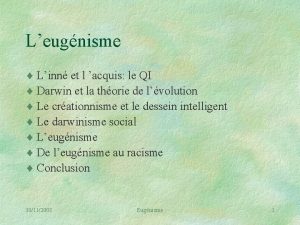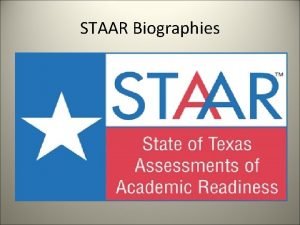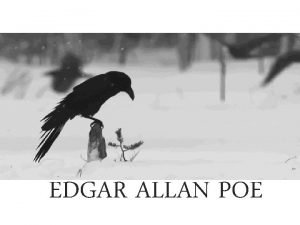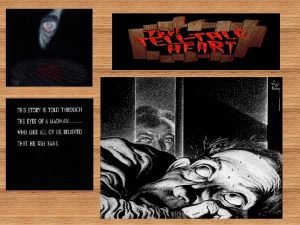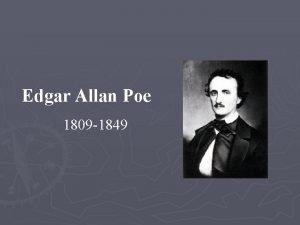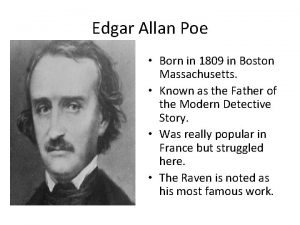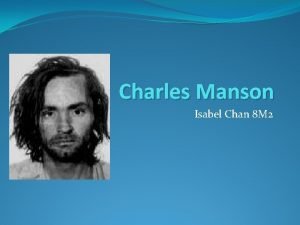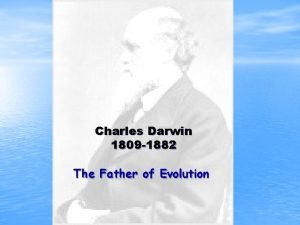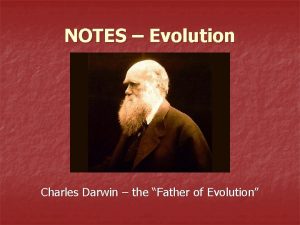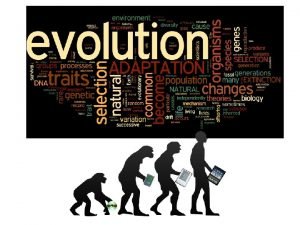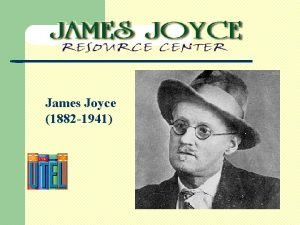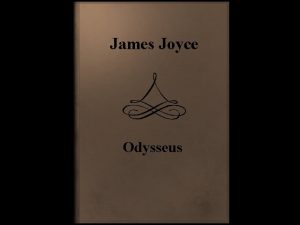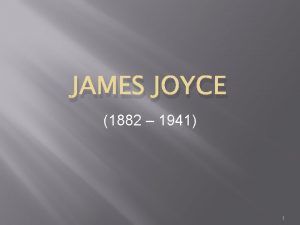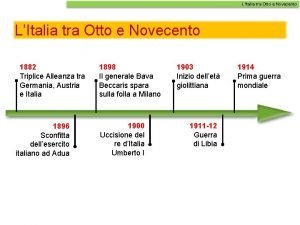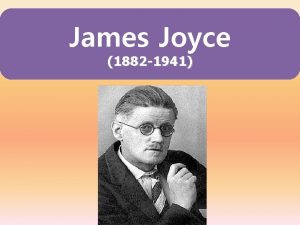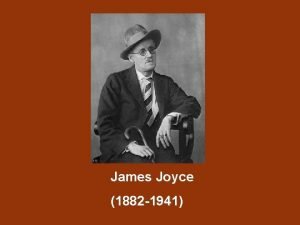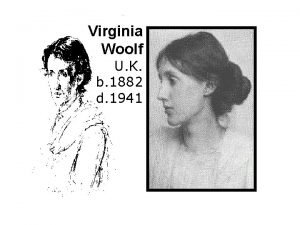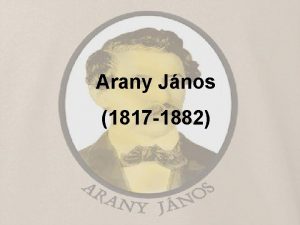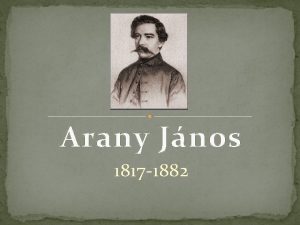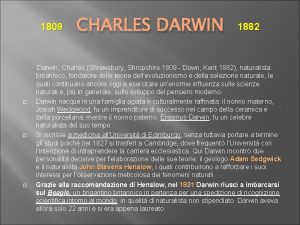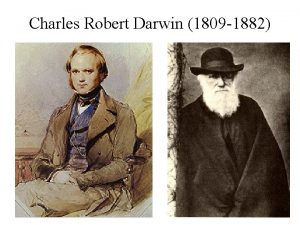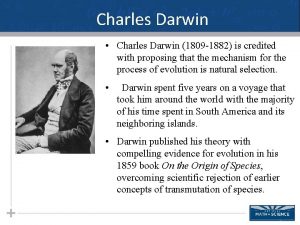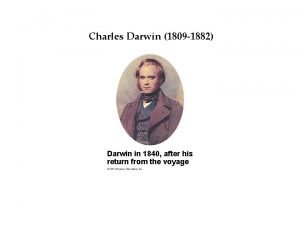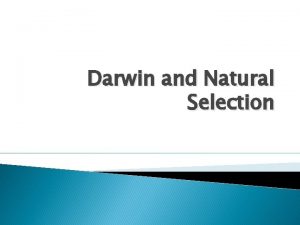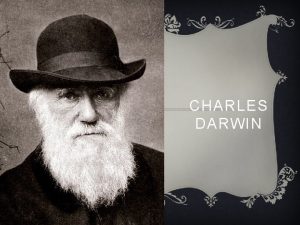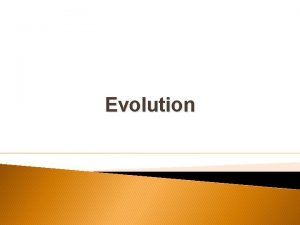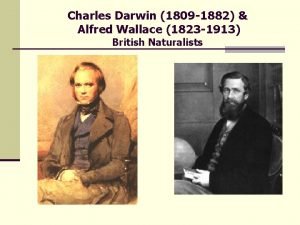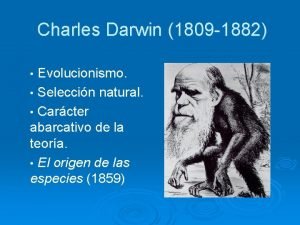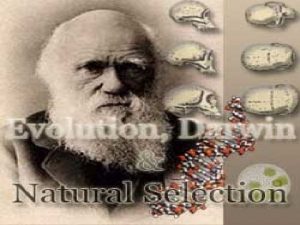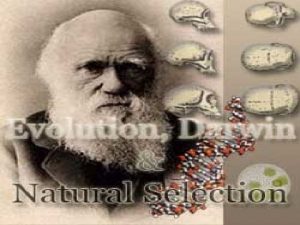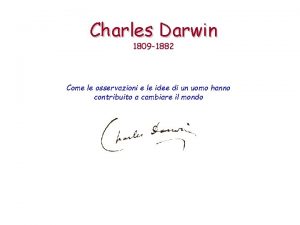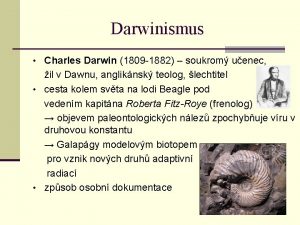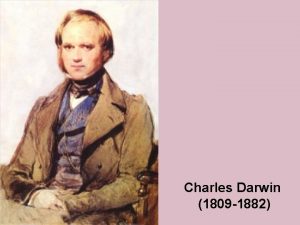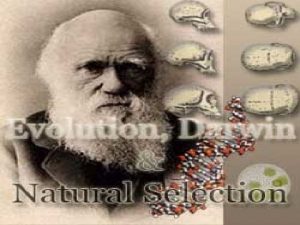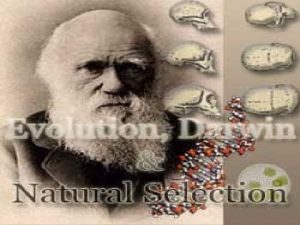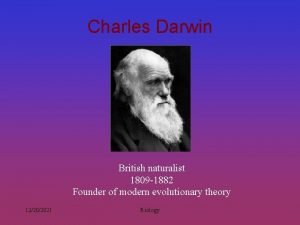Charles Darwin 1809 1882 Father of Evolution Darwin

























































- Slides: 57

• Charles Darwin (1809 -1882) “Father of Evolution”

Darwin He went on a voyage from 1831 – 1836 on the H. M. S. Beagle as a dinner companion to the captain and wound up becoming the ships’ naturalist.

Darwin The voyage went around the world and made a very important stop on the Galapagos Islands (a group of small islands off the west coast of South America).

Darwin It was at the Galapagos Islands that Darwin collected samples and observed the characteristics of many animals and plants which varied noticeably among the different islands, each with a very different climate. He focused a lot on finches, marine iguanas and tortoises.

Darwin • He proposed animals on the different islands had once been members of the same original species which came from a South American ancestral species.

Darwin’s Favorites

Darwin’s Favorites

Darwin’s Favorites

Darwin began assembling his ideas upon his return from the voyage. He wrote some preliminary manuscripts while working on other things for the next 20+ years.

Darwin finally published On the Origin of Species in 1859 after he read Wallace’s essay which summarized Darwin’s own thoughts on natural selection.

Darwin Why did he wait so long? Because he was both stunned and disturbed by what he had observed and discovered as it challenged the fundamental scientific beliefs of that time (not to mention religious beliefs).

Darwin Since the day it was published until now, On the Origin of Species is considered one of the most influential, yet controversial books ever written.

Darwin saw things as “descent with modification. ” By this he meant that the species of organisms inhabiting Earth today descended from ancestral species.

Darwin This was due to 5 things he observed: 1. Exponential fertility 2. Stable population size 3. Limited resources 4. Individuals vary 5. Heritable variation.

Darwin The 5 observations led to 3 inferences: 1. Struggle for existence 2. Non-random survival 3. Natural selection (differential success in reproduction).

Darwin He proposed a mechanism for evolution called the Theory of Natural Selection – the best adapted individuals in a population survive and produce offspring that are likewise well adapted and that evolution is a matter of variations and chance.

Darwin Another way of understanding Natural Selection is that populations of organisms can change over the generations if individuals having certain heritable traits leave more offspring than others (differential reproductive success).

Summary of Darwin's Theory: • Individual organisms in nature differ from one another and this variation is inherited. (Natural Variation).

Summary of Darwin's Theory: • Organisms in nature produce more offspring than can survive, and many of those that survive do not reproduce. (Over-reproduction).

Summary of Darwin's Theory: • Because more organisms are produced than can survive members of each species must compete for limited resources. (Struggle for Existence).

Summary of Darwin's Theory: Because each organism is unique, each has different advantages and disadvantages in the struggle for existence. (Adaptations – any inherited characteristic that enhance an organism’s chance of survival, which also increases that organism’s chance of reproducing).

Summary of Darwin's Theory: Individuals best suited to their environment survive and reproduce most successfully (Survival of the Fittest). The characteristics that make them best suited to their environment are passed on to offspring.

Summary of Darwin's Theory: Individuals whose characteristics are not as suited to their environment die or leave fewer offspring. (Natural Selection).

Summary of Darwin's Theory: • Species change over time. Over long periods, natural selection causes changes in the characteristics of a species, such as in size and form. New species arise, and other species disappear. (Speciation).

Summary of Darwin's Theory: • Species alive today have descended with modifications from species that lived in the past. (Descent with Modification).

Summary of Darwin's Theory: • All organisms on Earth are united into a single tree of life by common descent. (Common Descent).

Darwin • What Darwin needed was a mechanism to explain theory of natural selection. How could favorable variations be transmitted to later generations. • Ironically the mechanism was being figured out at almost the same time.

Darwin • The rediscovery of Mendel’s work along with the explosion of genetics in the 20 th century was the missing mechanism to support Darwin’s theory of natural selection. • Darwinian theory supported by genetics is known as the modern synthesis.

Darwin • Even with the continuous addition of evidence, Darwin’s ideas concerning evolution are ridiculed. • Mainly due to misunderstanding and misconceptions.

Adaptations • An adaptation is an inherited characteristic that increases an organism’s chance of survival. • There are three main types of adaptations.

Adaptations 1. Structural Adaptations: anatomical adaptation by an organism that promotes the fitness in its environment – for example: wood peckers having a tough pointed beak for “drilling” holes in trees to get their prey or the shell of a turtle.

Structural Adaptations Mimicry can be an example of a structural adaptation – for example: a pueblan milksnake (harmless) looking like a coral snake (poisonous). This is also known as deceptive coloration. Pueblan Milksnake Lampropeltis triangulum Eastern Coral Snake Micrurus fulvius

Structural Adaptations Aposmatic coloration can be an example of a structural adaptation – a coral snake displaying bright colors to indicate that it is poisonous or the unrealistically brilliant colored eye opening of a red-eyed tree frog that provides just enough time to jump to another tree to avoid the startled predator. Red-Eyed Tree Frog Agalychnis challidryas

Structural Adaptations Camouflage is a structural adaptation that enables a species to blend with their surroundings – for example: a walking stick. This is also known as cryptic coloration. Walking stick Extatosoma tiaratum

Adaptations 2. Behavioral Adaptations: results from the response of an organism to its external environment – for example: frog mating “songs” or a squirrel storing acorns for the winter.

Adaptations 3. Physiological Adaptations: adaptation with a chemical basis that is associated with an organism’s function – for example: the proteins that make a spider’s web or the venom of a rattlesnake.

Evidence of (Species) Evolution

Evidence of (Species) Evolution 1. Fossils: preserved remains or evidence of an organism that lived long ago (bones, casts, frozen in ice or amber, etc…).

Formation of a Fossil 1. Water carries small rock particles to lakes and seas 2. Dead organisms are buried by layers of sediment. The weight compresses the layers which forms new rock. 3. Minerals replace all or part of the organism’s body. The preserved remains may later be discovered and studied.

Fossils • Incomplete records: There are “gaps” in the fossil record. It is estimated that 99% of all species that have ever lived on Earth are now extinct. The possibility that a representative of each species was preserved, or has been found, is unlikely.

Fossils • Found in layers of sedimentary rock (unless distorted by geological forces) with the upper layers having the newest, “more complex” organisms and the lower layers containing older, “less complex” organisms.

Fossils • Transitional links are intermediate species Fish between major groups of organisms. Amphibians Fossil links combined with modern Reptiles comparative anatomy allows us to deduce Birds Mammals vertebrate descent:

Fossils • Eusthenopteron is fish ancestral to amphibians. • Seymouria is amphibian ancestral to reptiles.

Fossils • Archeopteryx has features intermediate between primitive reptiles and birds. • Therapsids are reptiles ancestral to mammals.

Evidence of (Species) Evolution 2. Anatomy: Many organisms share a unity of plan;

Anatomy • Homologous Structures: body parts which are similar in structure and/or in function – for example: a human’s arm, a cat’s forelimb , a whale’s flipper and a bat’s wing.

Anatomy

Anatomy • Vestigial Organs: body parts (structures) once useful for an organism’s lifestyle, but now having no apparent function – for example: the wings of a flightless bird, the hindlimb bones of a snake or whale, a human’s appendix, etc….

Anatomy • The hindlimb bones of whales.

Evidence of (Species) Evolution 3. Comparative Embryology: the study of developing organisms that shows a number of relationships not obvious in the adult organisms – for example: pharyngeal pouches and “tails” as embryos in a variety of chordates.

Comparative Embryology • All vertebrates exhibit notochord during development.

Comparative Embryology • All vertebrates, including humans, exhibit paired pharyngeal pouches. • In fishes and amphibians, these become functioning gills. • In humans, they become the eustachian tubes, middle ear cavity, tonsils, and thyroid and parathyroid glands.

Comparative Embryology • Simplest explanation is that fish notochord and pharyngeal pouches are primitive fish features and fish are ancestral to other vertebrates.

Comparative Embryology

Evidence of (Species) Evolution 4. Comparative Biochemistry: Study of an organism on a biochemical level – for example: the similarities of amino acids in hemoglobin of the blood of various vertebrates.

Comparative Biochemistry • • • Almost all living organisms use the same basic biochemicals: DNA, ATP, many identical enzymes, DNA triplet code, 20 amino acids, introns, and hypervariable regions. (Prokaryotes i. e. true bacteria (Domain Eukarya), do not have introns. This points to a long period of time since all living things shared common ancestory. Similarity of biochemistry is explained by descent from common ancestor. DNA base sequences differences in DNA between a number of organisms shows less difference the more closely related they are; for example, 2. 5% difference between humans and chimpanzees but 42% difference between humans and lemurs. Amino acid sequences of cytochrome c show similarity between human and monkey, distance from human to duck and greater distance to Candida yeast. Data are understandable assuming humans and chimpanzees share a more recent common ancestor than do humans and lemurs, ducks, or yeast. Biochemical evidence is generally consistent with anatomical similarity of organisms.

Evidence of (Species) Evolution 5. Genetic Evidence: for example: DNA similarities between people in certain parts of the world compared to people in other parts of the world. • This is often considered a subset of comparative biochemistry.
 Charles darwin theory of evolution
Charles darwin theory of evolution Chapter 17 darwin's theory of evolution
Chapter 17 darwin's theory of evolution Examples of homologous structures
Examples of homologous structures Chapter 15 darwin's theory of evolution section 15-1
Chapter 15 darwin's theory of evolution section 15-1 Endosymbiont theory
Endosymbiont theory Darwin and evolution
Darwin and evolution Chapter 15 darwin's theory of evolution section 15-1
Chapter 15 darwin's theory of evolution section 15-1 Chapter 15 darwin's theory of evolution
Chapter 15 darwin's theory of evolution Chapter 15 darwin's theory of evolution
Chapter 15 darwin's theory of evolution Worldview academy
Worldview academy Molecular biology evidence of evolution
Molecular biology evidence of evolution Charles darwin vikidia
Charles darwin vikidia Charles darwin origine della specie
Charles darwin origine della specie Perro de la ratita presumida
Perro de la ratita presumida Charles darwin
Charles darwin Where was charles darwin born
Where was charles darwin born Darwin bombardier beetle
Darwin bombardier beetle Where was charles darwin born
Where was charles darwin born Iiss darwin
Iiss darwin Darwism
Darwism Interpersonal intelligence celebrities
Interpersonal intelligence celebrities Darwin vs lamarck worksheet
Darwin vs lamarck worksheet Charles darwin notes
Charles darwin notes Vem var charles darwin
Vem var charles darwin Origin of species by charles darwin
Origin of species by charles darwin Vestigial structures
Vestigial structures Charles darwin origine della specie
Charles darwin origine della specie Qi de darwin
Qi de darwin Chronemics in nonverbal communication
Chronemics in nonverbal communication 1836-1809
1836-1809 Joseph haydn (1732–1809)
Joseph haydn (1732–1809) Poet laureate 1809 1892
Poet laureate 1809 1892 January 19 1809
January 19 1809 A virtue is an habitual and firm disposition to do the good
A virtue is an habitual and firm disposition to do the good When was edgar allan poe born
When was edgar allan poe born 1849-1809
1849-1809 Author born in boston in 1809
Author born in boston in 1809 Charles luther manson
Charles luther manson Father of evolution
Father of evolution Whos the father of evolution
Whos the father of evolution Analogous structures
Analogous structures 1941-1882
1941-1882 1941-1882
1941-1882 1941-1882
1941-1882 Cassie thinking about cubism
Cassie thinking about cubism Re german date coffee co (1882)
Re german date coffee co (1882) Leopold bloom
Leopold bloom 1882-1941
1882-1941 1882 triplice alleanza
1882 triplice alleanza Reg és arany jános
Reg és arany jános Loi du 28 mars 1882
Loi du 28 mars 1882 1941-1882
1941-1882 James joyce birthplace
James joyce birthplace 1941-1882
1941-1882 1941-1882
1941-1882 1941-1882
1941-1882 1817-1882
1817-1882 1817-1882
1817-1882


